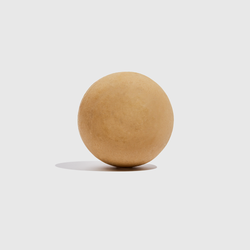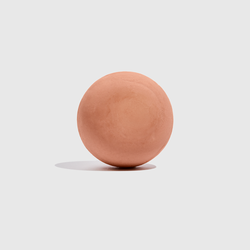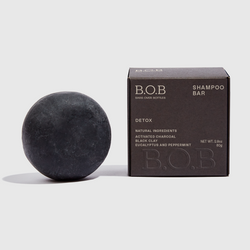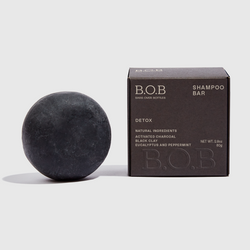No Poo Shampoo: What It Is and Why You Should Try It
Index
- What is no poo shampoo?
- What is the no poo method (and who is it good for)?
- Low poo or no poo shampoo
- How to make the switch to no poo shampoo
What on this great green earth is no poo shampoo? If you’ve heard “no poo” flying around on the internet, you might be scratching your head. What IS a no poo product exactly, and is it something you should try?
While the term “no poo” can seem suspicious at first, the “no poo method” is one of the best ways to wash your hair without stripping it of natural oils.
Shampoo as we know it today was only popularized in the 1930s. People had beautiful hair LONG before shampoo was around, and it is absolutely unnecessary in your beauty routine.
In fact, many traditional shampoos contain chemicals and detergents (such as sulfates) that remove sebum from your scalp. Sebum is the natural oil your sebaceous glands make that keeps your hair moisturized and protected.
If you strip the natural oils from your hair, it becomes more damaged and frizzy. It can also cause your glands to go into overdrive to try and re-hydrate your hair, making it more oily and requiring - you guessed it - even more hair products.
But it is possible to have healthy, shiny hair without traditional shampoo products. You can have your most healthy beautiful hair with small beauty routine changes, fewer washes, and natural shampoo bars and conditioners - which is exactly what no poo shampoo is all about.
What is no poo shampoo?

No poo shampoo is a shampoo alternative that is free from sulfates, silicones, preservatives, and other harsh chemicals that can dry out your hair or leave it feeling sticky and dull.
No poo shampoo may also be referred to as “low poo shampoo” depending on how the product is made and marketed.
Low poo and no poo shampoo products often work much more effectively than traditional shampoos. That’s because they rely on natural ingredients to clean your hair without damaging it or stripping it of moisture.
No poo shampoo is just one of the many ways to go “no poo.” So what is the best no poo product or no poo shampoo for you, and how do you use the no poo method?
Let’s look into the details of this clean beauty movement - and how my shampoo and conditioner bars can help.
What is the no poo method (and who is it good for)?

The no poo method is a way of washing your hair without synthetic shampoos. That doesn’t mean you aren’t washing your hair at all though. There are many different ways to try the no poo method, and each of them has their own pros and cons.
If you have a history of skin or scalp issues, you should talk with your healthcare provider or dermatologist before attempting it. Otherwise, nearly anyone can try no poo.
Skipping shampoo might be more difficult if you have fine or thin hair because your hair will get oilier faster. Before quitting shampoo cold turkey, you can try slowly stretching the time between washes for a few weeks.
People with curly or very coarse hair may see the most benefits of no poo because the natural oils produced by the scalp can make hair smoother and less frizzy.
Each no poo alternative will work better for some people than others. The only way to know if you like the outcome is to try it.
What no poo products or methods are best for your hair? I’m going to try and help you figure that out! Here are some of the most popular ways to add the no poo method to your own routine.
Low poo or no poo shampoo

There are many low poo and no poo products out there on the market, and some of them can truly work wonders on your hair.
In my collection of solid beauty bars, you’ll not only find no poo shampoo options for every hair type, but you’ll also be moving to a 100% plastic-free haircare routine. This is a great choice for anyone aiming to minimize their environmental impact, while providing their hair with the very best benefits.
I truly believe that the best shampoo bars and conditioner bars for curly hair, dry hair, or oily hair are made from natural ingredients with absolutely NO sulfates or silicones, also making them perfect no poo options.
My shampoo bars for curly hair are extra-moisturizing with coconut oil, buriti oil, and keratin to help bring bounce and volume back to curls that have been dulled over time. Shampoo bars for normal-to-oily hair will help your locks feel refreshed with ultra-cleansing green clay, which cleans without stripping or damaging your strands.
Both my no poo shampoo bars and natural conditioner bars are a breeze to use. You just wet the bar, rub it in your hands to work up some product, and work the product through your hair for a few minutes before rinsing.
Pros:
- You can find products specifically formulated for your hair type
- There are so many fun fragrances to choose from
- You can get shampoo bars for a 100% plastic-free option
Cons:
- Some products are more costly than others, so you will have to decide what is worth it to you
- You have to do your own research on ingredient labels
Best for:
Anyone! There is a low poo or no poo product out there for every hair type from oily to dry to curly.
Co-washing
Co-washing stands for “conditioner-only washing” - and it’s exactly what it sounds like.
Conditioner is naturally moisturizing and can be a gentle cleanser as well. When you co-wash, you use conditioner the same way you would your shampoo (have questions about how to use conditioner bars? I’ve got you covered).
In short, rub your conditioner bar through all of your hair, including the scalp. Then, rinse thoroughly.
Pros:
- It is gentler on your hair
- You can choose nice fragrances
Cons:
- It may make your hair dull or weighed-down if you don’t rinse thoroughly
- It may be too moisturizing for thin or oily hair
Best for:
Dry textured hair, coarse curls, or chemically-treated hair.
Baking soda & apple cider vinegar
Baking soda is a natural cleanser and exfoliator, which is why people have been using it in skin care products for years. But did you know you can use it in your hair too?
Mixing one part baking soda to three parts warm water gives you your very own DIY shampoo. You can apply this highly clarifying paste to your scalp, and let it sit for a few minutes before rinsing with apple cider vinegar (ACV).
It is important to follow up with an apple cider vinegar rinse because baking soda has a very high pH. Using ACV afterwards will help to rebalance your hair and reduce frizz. Or, you can use a natural, no poo shampoo bar that has a balanced formula. I’ve carefully ensured that all of my shampoo and conditioner bars are pH-balanced and helpful for your hair health - a win-win!
Pros:
- The ingredients are cheap
- It may make your hair shiny
- Apple cider vinegar is antifungal, so it may help treat dandruff
Cons:
- It may cause scalp irritation
- It may disrupt your natural pH
Best for:
Dry hair or hair with dandruff.
Coconut oil
Coconut oil is extremely moisturizing and nourishing, which is why some people opt to use it instead of shampoo. It’s exactly why I use it as a base ingredient in my moisturizing shampoo and conditioner bars!
The fatty acids in coconut oil are antimicrobial, so they may help with bacteria and dandruff, and can work as a natural cleanser for your scalp.
If you want an added dose of moisturization, you can use coconut oil once a month or every other month, in addition to your moisturizing bars.
Simply apply it to your hair before washing, and then rinse it out thoroughly with water.
Pros:
- It is inexpensive
- It is very moisturizing
- It smells great
- It may get rid of dandruff
Cons:
- It can be too greasy
- It takes a long time to rinse out
- It can make your shower very slippery (so use with caution!)
Best for:
Hair with dandruff, or dry, coarse, or damaged hair.
Just washing with water!
Some people find that literally just washing with water does the trick for their hair.
If you want to try washing with water, make sure to use lukewarm water, as hot water can dry out your hair and skin.
While washing your hair, pull a natural-bristle brush through it from scalp to tips to distribute your natural oils more evenly through your hair. You can then use my leave-in conditioner bar to get the smooth, softness you crave.
Just know that you’ll still probably want to use a no poo shampoo very occasionally for a deep cleanse.
Pros:
- You don’t need to spend money on any products (except maybe a natural-bristle brush)
- It’s 100% chemical-free
Cons:
- Your hair might not feel as clean as you would prefer
- It can be difficult to disperse the oils all the way down to the ends of medium-to-long hair
Best for:
Normal-to-oily hair types, and hair that is short-to-medium in length.
How to make the switch to no poo shampoo
Switching to no poo shampoo is simple, but can take some time and a little trial and error.
Your scalp and hair will go through an adjustment phase no matter what method you choose, and your hair may seem greasy or strange to you for a little while until your body adjusts.
Don’t give up!
As a rule of thumb, it can take 3 to 6 weeks for your hair to fully transition when you use a new product, and the longer your hair, the longer it may take.
You may need to experiment with different no poo methods and shampoo bars to find the one that best suits your hair. Regardless of your selection or method of adopting the no poo method, always make sure you’re using 100% natural, quality-sourced ingredients, pH-balanced formulas, and plastic-free packaging for a sustainable hair routine.
Once you’ve made the shift, there will be no going back to traditional shampoos, I can guarantee it!



































